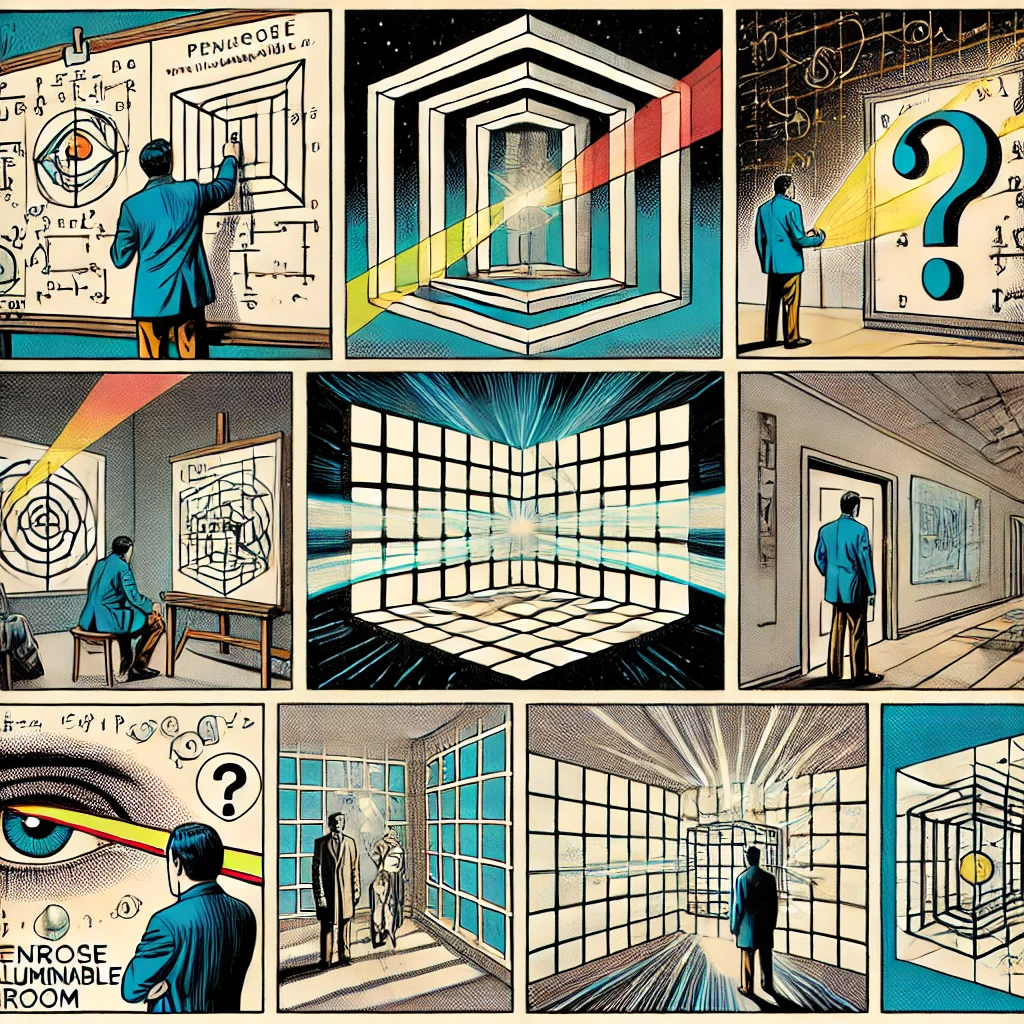The Penrose unilluminable room
In the realm of optical illusions and mind-bending visual phenomena, few concepts captivate the imagination quite like the Penrose Unilluminable Room. Named after the renowned mathematician and physicist Sir Roger Penrose, this intriguing concept challenges our perception of space, depth, and reality. Join us on a journey as we explore the mysteries of the Penrose Unilluminable Room in this blog post.
The Illusion Unveiled
At first glance, the Penrose Unilluminable Room appears to defy the laws of geometry and physics. It presents a room with walls, floors, and ceilings that seem to converge at impossible angles, creating an optical illusion of infinite depth or paradoxical spatial arrangements. What makes this illusion so captivating is its ability to trick our brains into perceiving an impossible configuration of space.
Origins and Inspiration
The concept of the Penrose Unilluminable Room draws inspiration from the work of Sir Roger Penrose and his father, Lionel Penrose, both pioneers in the field of visual perception and geometric paradoxes. The idea emerged from discussions and collaborations between the Penrose family and other mathematicians and artists fascinated by the intersection of art, science, and perception.
How It Works
The magic of the Penrose Unilluminable Room lies in cleverly manipulating perspective and depth cues. By strategically aligning the walls, corners, and architectural elements, designers create an illusion that challenges our perception of what is possible in three-dimensional space. The use of forced perspective, ambiguous geometry, and carefully crafted patterns tricks our brains into interpreting the room in ways that defy rational explanation.
Real-World Applications
While the Penrose Unilluminable Room is primarily a feat of artistic and mathematical creativity, it has inspired discussions and explorations in various fields:
- Art and Design: Artists and designers often draw inspiration from optical illusions like the Penrose Unilluminable Room to create captivating artworks that play with viewers’ perceptions and challenge conventional notions of space and form.
- Psychology and Perception: Psychologists and neuroscientists study optical illusions to gain insights into how the brain processes visual information, highlighting the complexities of human perception and cognition.
- Mathematics and Geometry: Mathematicians and geometricians delve into the underlying principles of geometric paradoxes and impossible constructions, exploring the boundaries of mathematical imagination and abstraction.
The Mind’s Playground
Ultimately, the Penrose Unilluminable Room serves as a testament to the creative potential of human perception and imagination. It invites us to question our assumptions about reality, embrace the wonders of optical illusions, and marvel at the intricate interplay between art, science, and human cognition.
